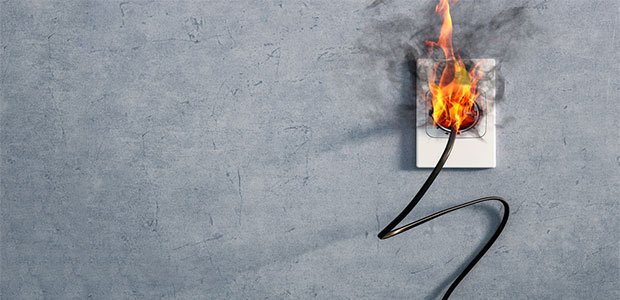
Last Week Was Fire Prevention Week: Refresh Yourself on Some Home Fire Safety Tips
October 6-12 was Fire Prevention Week, and the National Safety Council has compiled a handful of tips for fires: how to prevent them and how to react to them safely.
Despite a recent decline in home fire deaths since 1980, fire is still the third leading cause of death for children ages 1 to 14. According to Injury Facts, over the last few decades, deaths from home fires have gone from 5,200 in 1980 to 2,710 in 2017. However, NSC Injury Facts also reports that 127 children between 1 to 14 years of age died from fire and smoke in 2017 alone.
Fire safety is tricky: while the “stop, drop, and roll” phrase is still important and applicable, it is not the only consideration when keeping homes—or other locations—safe from fires. People need to know how to prevent them and how to react when they do happen.
Home fires have some notable trends. For example, the majority of home fires and fire injuries are from cooking fires. The NSC recommends you keep the following tips in mind when cooking:
- Be alert; do not use the oven or stovetop if you are sleepy or under the influence of a substance
- Stay in the kitchen if you are cooking food with any form of heat
- When simmering, baking or roasting, check the food regularly, remain in the kitchen while cooking, and use a timer
- Keep anything that can catch fire away from your stovetop
Heating is the second leading cause of home fires. The American Red Cross shares these tips:
- Keep all flammables, like paper, clothing, bedding, drapes or rugs, at least three feet from a space heater, stove, or fireplace
- Never leave portable heaters and fireplaces unattended; turn off heaters and make sure fireplace embers are extinguished before leaving the room
- If you must use a space heater, place it on ceramic tile and not a rug or carpet; also make sure children and pets stay away from the space heater
In addition to cooking, other top causes of fire include smoking, electrical problems, and candles. To minimize home fire risks:
- Institute a “no smoking” policy in the house
- Check all cords and replace any that are frayed or have exposed wires
- Switch to flameless candles if possible
- Keep matches and lighters high and out of children’s reach or in a locked cabinet
While there are small, easy changes you can make to your home and your routine to minimize the in-home fire risks, fires still happen. The next step is nailing down efficient and safe response techniques—the easiest one being a smoke alarm.
Smoke alarms can be annoying: they beep, you have to replace batteries, and if you cook something smokey in the kitchen they sometimes go off. However, they are essential for fire safety, as they give an early warning that greatly reduces risk of injury or death. The National Fire Protection Association (NFPA) reports that three out of five fire deaths happen in homes with no smoke alarms or working smoke alarms. The NFPA recommends you:
- Install smoke alarms on the ceiling or high on the wall on every level of your home, inside bedrooms, and outside sleeping areas
- Keep smoke alarms away from the kitchen, at least 10 feet from the stove, to reduce false alarms
- Use special alarms with strobe lights and bed shakers for people who are hard of hearing or deaf
- Replace batteries annually, and change the batteries in your carbon monoxide detector at the same time
- Replace smoke alarms that are 10 or more years old
Making an escape plan is the other important part of the puzzle. With a fire reported every 88 seconds, there is only a minute or two to escape once a fire starts and the smoke alarm sounds. Having a home escape plan is crucial—and practicing fire evacuation methods in workplaces is just as important as well. The NFPA recommends following these guidelines:
- Plan two ways to escape from each room
- Make sure all doors and windows leading outside open easily
- Identify secondary routes—a window onto an adjacent roof or a collapsible ladder from upper-story windows
- If in a multi-story building, always use the stairs—never the elevator
- Practice your fire escape plan! This includes practicing getting out with your eyes closed, crawling on the floor with your mouth covered, doing “stop, drop, and roll” and testing door handles to see if they are hot.
Lastly, know where your nearest fire extinguisher is. But remember, not all fire extinguishers are created equal. If you are not confident in your ability to use a fire extinguisher, get out and call 9-1-1. Before using a fire extinguisher, the American Red Cross urges you to evaluate the situation and ensure:
- Everyone has left or is leaving the home or space
- The fire department has been called
- The fire is small, not spreading, and there is not much smoke
- Your back is to an exit you can use quickly
To use a fire extinguisher, remember the acronym PASS:
- Pull the pin
- Aim low at the base of the fire
- Squeeze the handle slowly
- Sweep the nozzle side to side
To learn about the different types of fire extinguishers and the NFPA’s recommendations, go here. For more fire-related advice like types of burns, treating burns, home fire safety checklists, and more, visit NSC’s page.